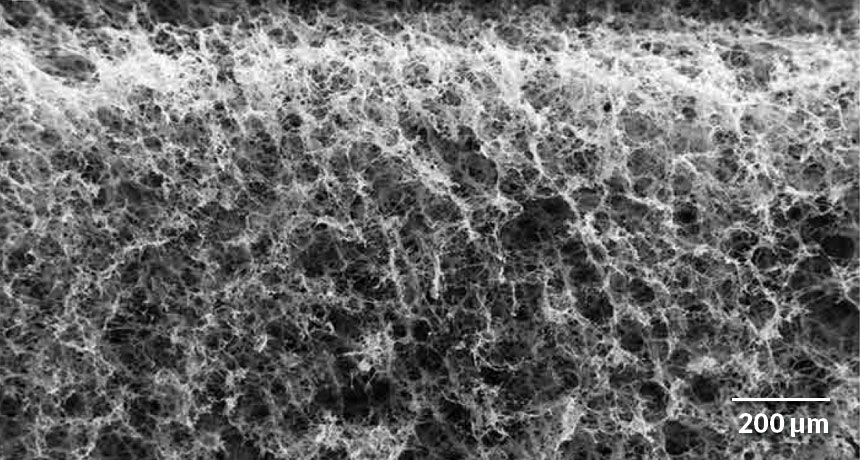A new graphene foam stays squishy at the coldest temperatures
The superelastic material could be useful in space

DEEP FREEZE Normal materials become brittle in deep cryogenic conditions, but a new graphene-based foam (shown in this scanning electron microscopy image) stays as flexible as ever.
K. Zhao/Science Advances 2019







